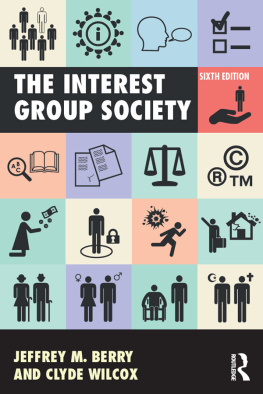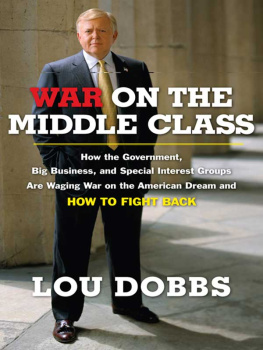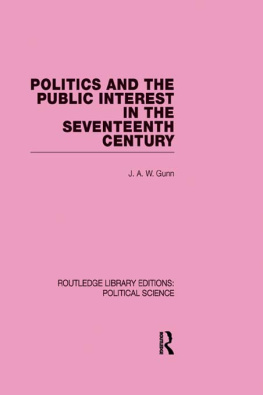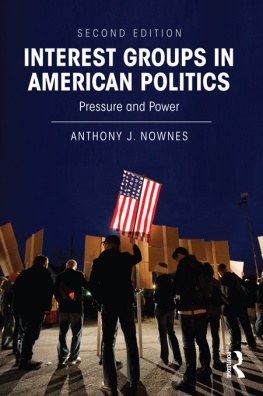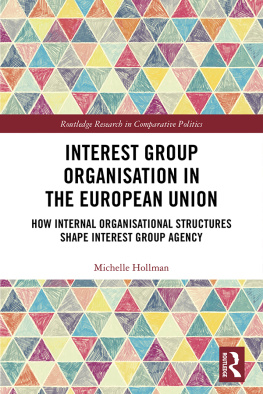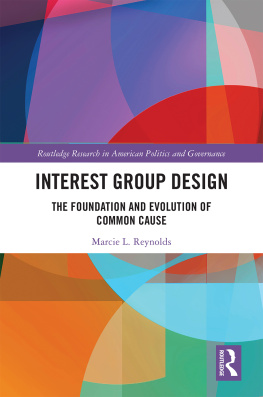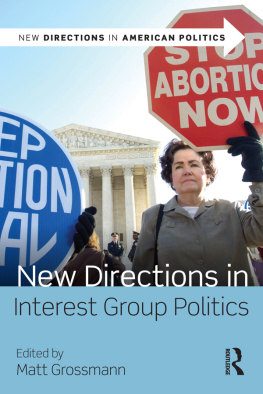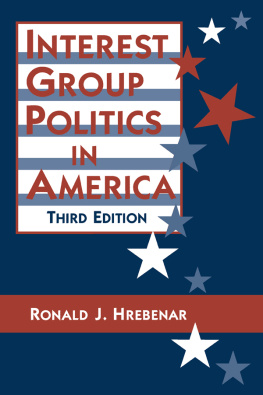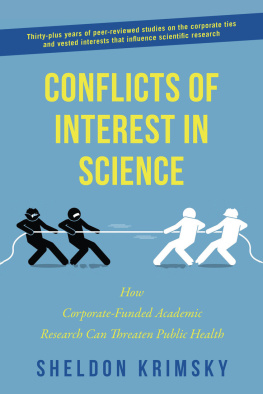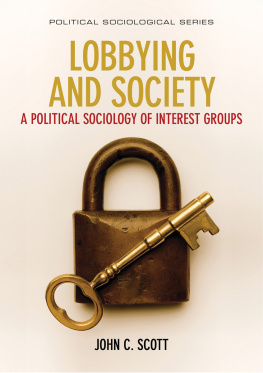The Interest Group Society
Considered the gold standard of interest group politics, this widely used text analyzes interest groups within the intuitive framework of democratic theory, enabling readers to understand the workings of interest groups within the larger context of our political system. Comprehensive coverage includes not only the traditional farm, labor, and trade associations, but also citizen groups, public interest organizations, corporations, and public interest firms. It covers new social movements and networks of organizations and activists.
Brief in page count yet comprehensive in coverage, the book is flexible for different class settings. The books rich content and lean size allow it to stand alone as the centerpiece of a course, or be assigned as one of several texts.
New to the Sixth Edition
Updates the role of money in interest group activity following the Citizens United Supreme Court decision, including the emergence of dark money in campaigns
Covers new interest groups and social movements, including the Tea Party, Occupy Wall Street, Black Lives Matter, and others
Explores the dazzling array of organizational forms through which interest groups can be involved, including PACs, Super PACs, 527 committees, and 501(c)(4) and (c)(6) groups
Demonstrates how the increased polarization of American politics has forced interest groups to become more partisan
Examines new developments in key interest group arenas including health care and the environment
Looks at the role of social media in interest groups
Adds a comparative look at interest group action, organization, and scholarship abroad
Jeffrey M. Berry is Professor of Political Science at Tufts University.
Clyde Wilcox is Professor in the Government Department at Georgetown University.
The Interest Group Society
Sixth Edition
Jeffrey M. Berry and Clyde Wilcox
Published 2018
by Routledge
711 Third Avenue, New York, NY 10017
and by Routledge
2 Park Square, Milton Park, Abingdon, Oxon, OX14 4RN
Routledge is an imprint of the Taylor & Francis Group, an informa business
2018 Taylor & Francis
The right of Jeffrey M. Berry and Clyde Wilcox to be identified as the authors of this work has been asserted by them in accordance with sections 77 and 78 of the Copyright, Designs and Patents Act 1988.
All rights reserved. No part of this book may be reprinted or reproduced or utilised in any form or by any electronic, mechanical, or other means, now known or hereafter invented, including photocopying and recording, or in any information storage or retrieval system, without permission in writing from the publishers.
Trademark notice: Product or corporate names may be trademarks or registered trademarks, and are used only for identification and explanation without intent to infringe.
First edition published by Little, Brown 1984
Second edition published by Scott, Foresman and Company 1989
Third edition published by Longman 1997
Fourth edition published by Pearson Education, Inc. 2007
Fifth edition published by Pearson Education, Inc. 2009
Library of Congress Cataloging in Publication Data
Names: Berry, Jeffrey M., 1948- author. | Wilcox, Clyde,
1953- author.
Title: The Interest Group Society / Jeffrey M. Berry, Tufts University,
Clyde Wilcox, Georgetown University.
Description: Sixth Edition. | New York: Routledge, 2018. | Fifth
edition published by Pearson Education, Inc. 2009--T.p. verso. |
Includes bibliographical references and index.
Identifiers: LCCN 2017042911 | ISBN 9781138691735 (hardback)
| ISBN 9781138691742 (paperback) | ISBN 9781315534091
(ebook)
Subjects: LCSH: Pressure groups--United States.
Classification: LCC JK1118 .B395 2018 | DDC 322.4/30973--dc23
LC record available at https://lccn.loc.gov/2017042911
ISBN: 978-1-138-69173-5 (hbk)
ISBN: 978-1-138-69174-2 (pbk)
ISBN: 978-1-315-53409-1 (ebk)
Typeset in Sabon by
Servis Filmsetting Ltd, Stockport, Cheshire
For Jessica and Rachel
Elaine and Neil
Brief Contents
Preface
Madisons Dilemma
The Advocacy Explosion
Mobilization and Organization
The Party Connection
Interest Groups in Campaigns
Lobbyists
Public Opinion and Grassroots Lobbying
Washington Lobbying
The Rise of Networks and Coalitions
Bias and Representation
Index
Contents
Preface
Madisons Dilemma
Curing the Mischiefs of Faction
Interest Groups and Their Functions
Pluralism
Interest Groups and Civil Society
Conclusion
Further Reading
Notes
The Advocacy Explosion
The Interest Group Spiral
Movement Politics
Business Fights Back
A Labor-Liberal Alliance
Conclusion
Further Reading
Notes
Mobilization and Organization
Competing Theories
Supply of Benefits
Marketing Interest Groups: Direct Mail and Internet Fundraising
Maintaining the Organization
Who Governs?
Making Decisions
Conclusion
Further Reading
Notes
The Party Connection
The Advantages of Interest Groups
Working Together
Keeping Parties Straight and True
Financial Support
Conclusion
Further Reading
Notes
Interest Groups in Campaigns
Group Involvement in Elections
Nonfinancial Support
Interest Group Money in Campaigns
Conclusion
Further Reading
Notes
Lobbyists
A Day in the Life of a Lobbyist
Effective Lobbying
Create a Dependency
Lobbying as a Career
Lobbyists for Hire
Conclusion
Further Reading
Notes
Public Opinion and Grassroots Lobbying
Direct Citizen Lobbying
Lobbying the Public
Demonstrations and Protests
Conclusion
Further Reading
Notes
Washington Lobbying
Congress
Executive Branch
The Courts
Strategic Decision Making
Conclusion
Further Reading
Notes
The Rise of Networks and Coalitions
Coalitions: Everyday Politics
Ideological and Partisan Networks
Issue Networks
The Qualities of Issue Networks
Continuity and Change in Issue Networks
Conclusion
Further Reading
Notes
Bias and Representation
Corporate Wealth and Political Advocacy
A Special Relationship
Beyond Business
Reform
Further Reading
Notes
Index
Preface
It has been nine years since I last updated The Interest Group Society. Many things have changed since the last edition, and many have remained the same. The greatest change has been in the way interest groups are involved in elections. When Jeffrey Berry wrote the first edition of this book, interest groups were primarily involved in contributing to candidates through their PACs. Today there is a dazzling array of organizational forms through which interest groups can be involved, including PACs, Super PACs, 527 committees, 501(c)(4) and (c)(6) groups, among others. Each of these organizational forms entails a different set of regulations, which groups that seek maximum impact on elections circumvent in a variety of creative ways. Interest group activity in elections is far less transparent than it was when the last edition appeared. Large sums of dark money pass between various organizations, making it difficult and often impossible to know who provided the funding.

